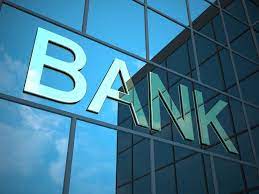Payment systems are integral to the functioning of banks and financial markets. They enable the secure and efficient transfer of funds between individuals, businesses, and other entities. Banks and financial markets offer various payment systems and services to facilitate transactions. Let’s explore some of the key payment systems:
- Automated Clearing House (ACH): ACH is an electronic payment system that enables the transfer of funds between bank accounts. It is commonly used for direct deposit of salaries, bill payments, and recurring transactions. ACH transfers are typically batched and settled in batches throughout the day.
- Wire Transfers: Wire transfers allow for the immediate transfer of funds between different banks or financial institutions. They are commonly used for large-value transactions that require real-time settlement, such as international transfers or time-sensitive payments.
- Online Banking: Online banking platforms provided by banks allow customers to manage their accounts and conduct transactions electronically. Customers can transfer funds between their own accounts, pay bills, and initiate external transfers to other individuals or businesses.
- Mobile Payment Systems: With the rise of smartphones, mobile payment systems have gained popularity. These systems enable individuals to make payments using mobile apps or digital wallets linked to their bank accounts or credit cards. Examples include Apple Pay, Google Pay, and Samsung Pay.
- Point of Sale (POS) Systems: POS systems are used by businesses to accept payments from customers at physical locations. They involve the use of card readers or contactless payment devices that allow customers to make payments using credit or debit cards, mobile wallets, or other electronic payment methods.
- Electronic Funds Transfer (EFT): EFT refers to the electronic transfer of funds between accounts within the same financial institution or across different institutions. It encompasses various payment methods, including ACH transfers, wire transfers, and online banking transactions.
- Payment Cards: Banks issue payment cards such as debit cards and credit cards, which enable individuals to make purchases or withdraw cash. Debit cards deduct funds directly from the cardholder’s bank account, while credit cards allow for borrowing up to a set credit limit.
- Clearing and Settlement Systems: Clearing and settlement systems ensure the smooth transfer of funds between financial institutions involved in a transaction. These systems verify the authenticity of transactions, reconcile accounts, and settle payment obligations.
- Cross-Border Payment Systems: Banks and financial markets facilitate cross-border payments, allowing individuals and businesses to transfer funds internationally. These systems involve correspondent banking relationships, currency conversion, and compliance with international regulations.
- Peer-to-Peer (P2P) Payments: P2P payment systems enable individuals to transfer funds directly to each other using mobile apps or online platforms. Examples include Venmo, PayPal, and Zelle, which allow users to send money to friends, family, or other individuals.
It’s important to note that payment systems may vary across countries and regions, and the availability of specific payment services can depend on the offerings of individual banks and financial institutions. Additionally, advancements in technology and digital innovation continue to shape the landscape of payment systems, leading to the emergence of new methods and platforms.
SHARE
